It’s April Fool’s Day so let’s get foolish.
At some point in the early to mid-90s, there was this song parody featured on the Howard Stern radio show titled, “What Is That Thing On Aaron Neville’s Face?”
You are viewing: Why Does Norman Osborn Have Waves
Every time I heard it, I was reminded of a certain family in Spidey’s supporting cast: The Osborns. Because damn son, what is up with their hair? It’s like a red-haired afro on two lily-white dudes. Seriously now, take another look:
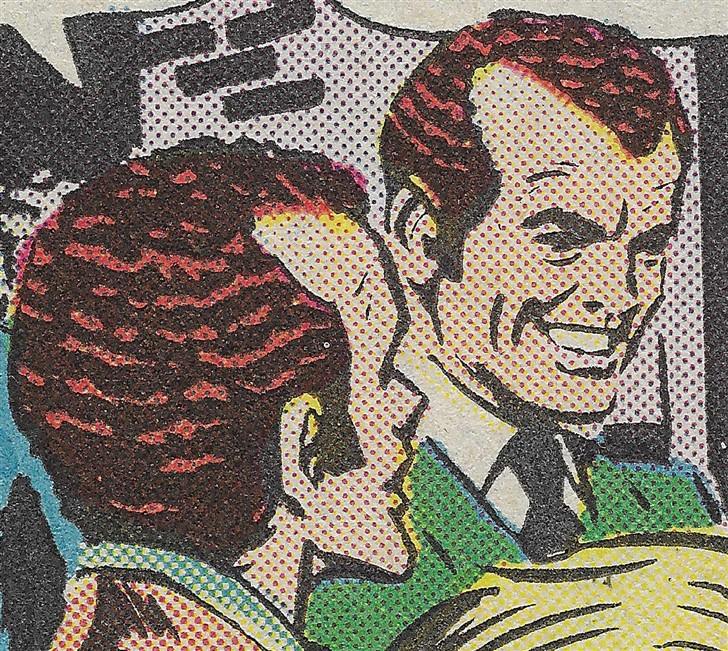
For the sake of historical accuracy, I feel compelled to point out that this was not the first time Ditko drew such a hairstyle in the pages of Amazing Spider-Man. The first major character in the title to sport this look was actually the Sandman, going all the way back to the fourth issue:
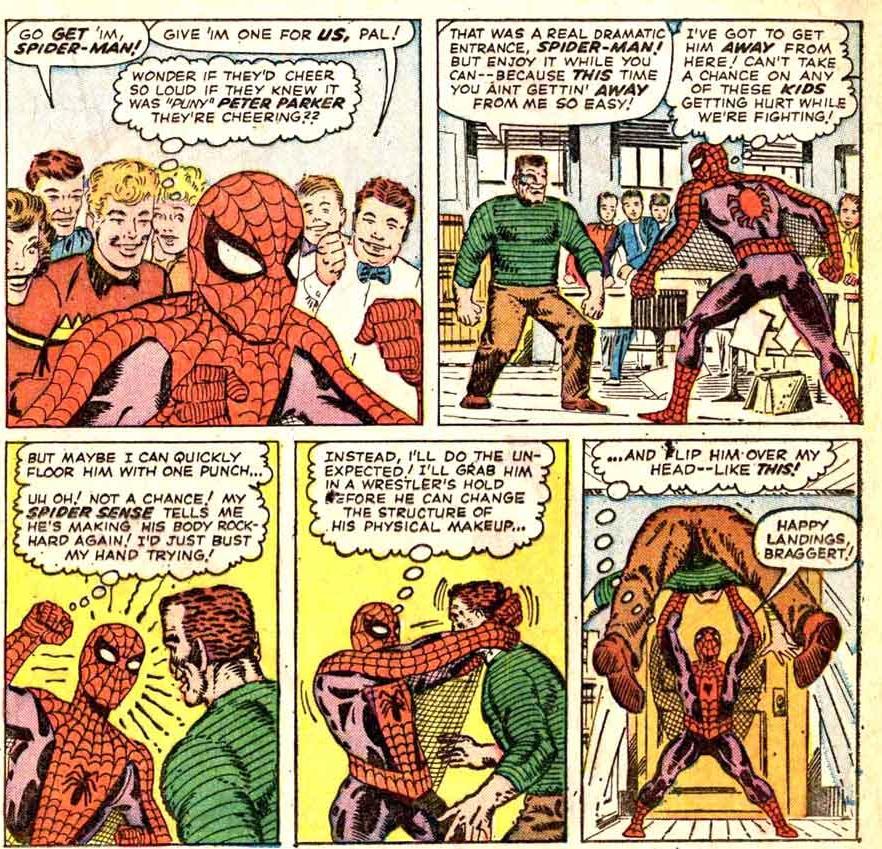
Full confession time: Ditko likely gave this hairstyle to a few other characters as well, but I’m not going to burn an entire weekend researching all those old monster-anthology titles he did for Charlton and Atlas to find out.
In any case, the Osborn family remains the most known for this hair, possibly because the style would appear to be hereditary. The Osborn hair has been described as cornrows, waves, crinkle cut, or treated hair (with pomade or something similar). Others have even joked that the Goblin’s hat is actually a durag (or do-rag, dew-rag, however one chooses to spell it), designed specifically for styling Norman Osborn’s hair!
All of this is quite amusing, but the apparent truth of the matter is rather boring. It seems Ditko took inspiration for the hair from a real-life actor named Joseph Cotten. The name may not be widely recognized today, but Cotten actually appeared in ton of old movies, including several landmark films from the 40s (with many of them being all-time classics directed by the great Orson Welles). Here are some pics:
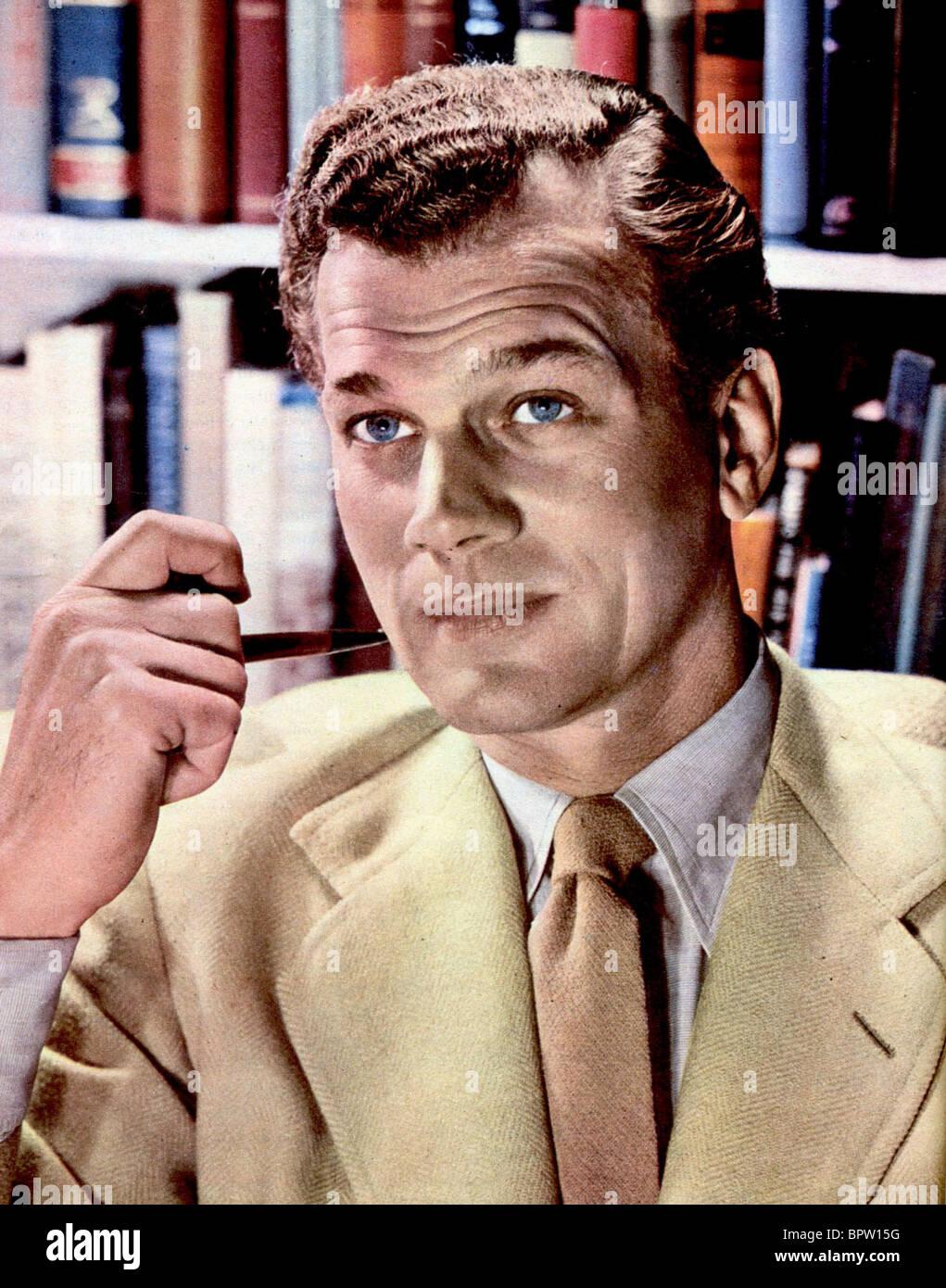
Looking at these, this guy could have TOTALLY played Norman Osborn.
Some will say that this hairstyle looks too antiquated though; that it looks ridiculous for a white guy to have such a hairstyle in more modern times. Well thanks to Reddit, I can tell you that there’s at least one white guy of some notoriety that wore his hair like this within the last decade or two.

This is John W. Oxendine, who served several terms as Insurance Commissioner in the state of Georgia. Again, could’ve been a great Norman Osborn.
But all kidding aside, the Osborn hair actually plays something of an important role in Spidey history, precisely because it is so unique and recognizable.
Mysteries Upon Mysteries
If you know your early Spider-Man history, particularly the Ditko run, then you know that illusion and identity were key themes during this time. In the very first issue, Amazing Spider-Man #1 (Mar. 1963), we’re introduced to the Chameleon, a villain who assumes the identities of others without ever revealing his own true face or name.
In Amazing Spider-Man #10 (Mar. 1964), we meet the Big Man, a seemingly large dude in this strangely-awesome, Picasso-style mask. The true identity of the Big Man is just a one-issue mystery, but it still made for a really fun story. Peter is convinced that Jameson is the Big Man early on before it’s eventually revealed that the nebbishy Frederick Foswell (in elevator shoes) is the wannabe crime boss.
Then ASM #14 (Jul. 1964) gives us the Green Goblin, another mystery villain, only this mystery is going to last a whole lot longer than just one issue. In fact, the Goblin’s true identity is still unknown to us when we reach Amazing Spider-Man #26 (Jul. 1965), which introduces us to yet another mystery villain, the Crime-Master. Gobby also plays a large role in this two-parter, as it’s revealed that he and CM both know each other’s secret identities (while we readers still aren’t privy to either). Once again, Pete jumps to a false conclusion, believing that the newly-freed Foswell has returned to his criminal ways and taken up the identity of the Crime-Master, only to discover by the end of issue #27 (after CM loses his life in a shoot-out with the police) that CM was this guy named Nick Lewis—a random crook that neither Spidey nor his readers had ever seen or heard of before.
“It’s kinda funny- in real life, when a villain is unmasked, he isn’t always the butler or the one you suspected,” Spidey thinks to himself. “Sometimes he’s a man you didn’t even know!”
Meanwhile, unknown to Pete, Foswell actually has taken up another identity, just not the one he thought: he’s posing as Patch, a guise Foswell uses to keep up with what’s going on in the criminal underworld.
Let me know when your head stops spinning. I’ll wait…
Read more : Why Is Ormond Beach So Cheap
So we had been given the fairly traditional mystery of the Big Man’s identity, one that was resolved in a single issue; then the Crime-Master, who was revealed to be a formerly unknown crook in a two-issue tale that really subverted reader expectations. All of which brings us to the Goblin, whose true identity is still unknown to us at this point. Would he turn out to be a known member of Spidey’s supporting cast, like Foswell, or another unknown, like Crime-Master?
No one knew it at the time, but the Green Goblin had been appearing in the background of ASM in his civilian identity for quite a while before we learned his name was Norman Osborn. The first time was Amazing Spider-Man #23 (Apr. 1965), where he is seen as one of the members of Jameson’s fancy-schmancy rich boy’s club.
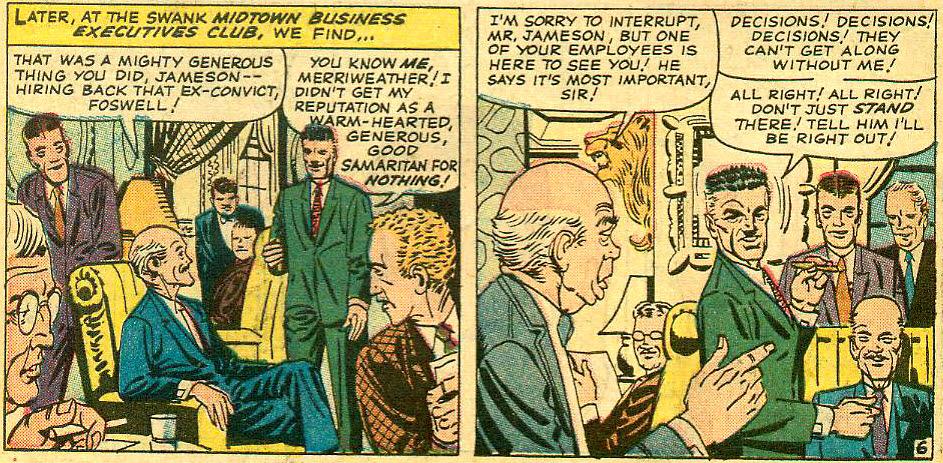
Two issues later in Amazing Spider-Man #25 (Jun. 1965), Norman appears again, apparently having bought some ad space for Oscorp in the Bugle.
Then he’s back again the very next issue, Amazing Spider-Man #26 (Jul. 1965), once more at the club, with dialogue this time.
…And back yet again the following issue, ASM #27 (Aug. 1965).
Note that three of these four issues featured the Goblin as an antagonist, which could have possibly been a (very) subtle clue—when the Goblin appears in a given issue, this guy also seems to be around.
Next, we get the formal introduction of both Harry Osborn and Gwen Stacy in Amazing Spider-Man #31 (Dec. 1965). Now if you’ve been paying REALLY close attention (which I can’t imagine too many people were in 1965), you might have noticed that this Osborn kid has the same funky haircut (and hair color) as that guy from Jameson’s club.
At long last, this brings us to ASM #37 (Jun. 1966), wherein Norman Osborn is identified by name for the first time, as well as revealed to be Harry’s father.
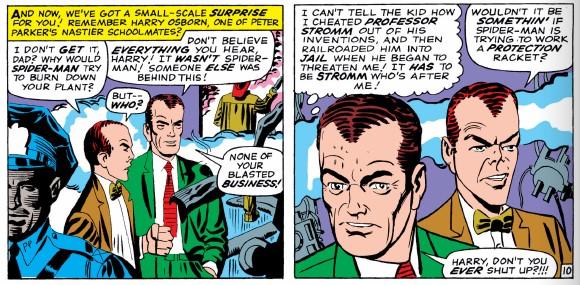
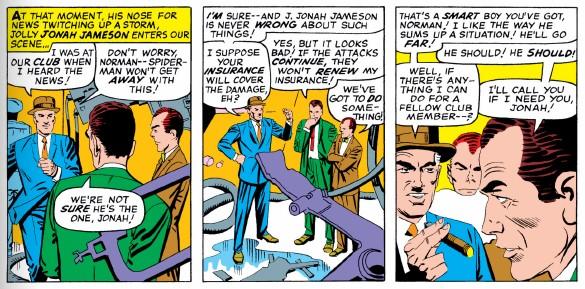
And based on his thoughts and dialogue throughout the issue, Norman comes off as rather nefarious. When Spidey saves him from a robot, he ponders: “Spider-Man should have known better than to butt into something that doesn’t concern him! I hope the robot finishes him off! He’s becoming too dangerous to my plans!”
Later in the issue, Normy bops Spidey in the back of his skull when he isn’t looking, knocking him cold for an extended stretch. Now we had seen Spidey shrug off blows from regular folk before, so this seems a clear sign that Norman Osborn ain’t regular folk. We also see the issue’s villain, Professor Stromm, get shot and killed via an assassin’s bullet from a very high window, and when Spidey checks this window, the assassin has vanished. Finally, by issue’s end, we see Norman brandishing the murder weapon, revealing himself as the killer.
So they didn’t go the Big Man route with the Goblin, but they didn’t go the Crime-Master route, either. They kinda split the difference, making the Goblin someone that was there in the background (if you were paying super-close attention), revealing him a tiny piece at a time, VERY slowly. Speaking for myself, I think this was a brilliant choice.
But whose choice was it?
“Just A Guy Named Joe”
I spent most of my young life believing that Ditko quit Spider-Man due to creative differences with Stan Lee; more specifically, a disagreement over the reveal of the Green Goblin’s identity. According to the stories I’d always heard back in ye olden days, Ditko wanted the Goblin to be either (A) Ned Leeds, or (B) some guy we’d never seen or heard of before, just like it was with the Crime-Master. But this was strictly scuttlebutt—I’d never seen any interview with either Ditko or Lee confirming this. So let’s take this opportunity to go over just what we absolutely know from the comic pages.
In the later, last days of his tenure on ASM, Ditko was not only the artist but also the plotter, as acknowledged by Stan Lee himself. Even if he wasn’t the plotter, it’s not like Stan micromanaged his artists, so Ditko could have still been the one putting Norman Osborn in the background of those earlier issues, planting those seeds. No other explanation really makes sense for why he would have done this—Norman was the Goblin and this had to be the plan, if not from the very beginning, then certainly when he first appeared in the background of ASM #23.
Ditko’s final issue of Spidey was ASM #38 (Jul. 1966), “Just a Guy Named Joe!” In this story, Norman Osborn disguises himself, visits some shady thugs, and puts a bounty on Spidey’s head. Now I can see how one could argue that this might be evidence that Norman wasn’t meant to be the Goblin, because why would he then hire cheap thugs like this? He could more capably tackle Spidey himself as the Goblin, right? Moreover, with his experience as the Goblin, he should also know these goons can’t be more than a minor annoyance to Spider-Man, so why bother?
Then there’s the exchange Peter has with Ned Leeds in this issue, which had both men clenching their firsts and yelling, leaving one with the impression that they would have come to blows then and there had Jameson not broken them up. It just feels like there was more going on there than what we saw on the surface, as the confrontation felt abnormally intense. Again, I can see how some could view this as evidence that Ditko was setting up bigger things for Ned and Pete beyond a simple romantic rivalry for the affections of Betty Brant.
Read more : Why Do The Ends Of My Hair Curl Up
Sturdy’s Own Words
As observed on this blog many times now, Sturdy Steve Ditko was something of a recluse, never granting interviews. But late in his life, he did reveal a significant amount of info via several essays he wrote between 2001 and 2012. In a 2001 essay first released as part of The Comics, a zine produced by Ditko associate Robin Snyder, the normally taciturn Ditko revealed a hell of a lot, particularly in regard to the Green Goblin. While I don’t have the original essay, I do have the magazine Starlog Movie Magic Presents Spider-Man and Other Comics Heroes (Jul. 2002), with the article “Spider Time,” which drew heavily from that 2001 essay. As the article reveals:
“Stan’s synopsis for [the first appearance of the Goblin in ASM #14] had a movie crew, on location, finding an Egyptian-like sarcophagus,” Steve Ditko remarked. “Inside was an ancient, mythological demon, the Green Goblin. He naturally came to life.”
Recognizing that the concept was too over-the-top for the adventures of a teenager-turned-superhero, Ditko then revamped the premise. “On my own, I changed Stan’s mythological demon into a human villain. So I had to have some definite ideas: who he was, his profession and how he fit into the Spider-Man story world. I was even going to use an earlier, planted character associated with J. Jonah Jameson; he [was to] be [revealed as] the Green Goblin. It was like a subplot working its way [into the stories] until it was ready to play an active role.” Unfortunately, by the time the Green Goblin was eventually unmasked, Ditko no longer had any input into the character, so when Lee finally revealed the Goblin’s true identity (as businessman Norman Osborn, father of Peter Parker’s best friend), he chose a different denouement than what Ditko had intended.
That “planted character associated with J. Jonah Jameson” clearly was Norman Osborn, of course, so no, we’re not crazy, Ditko did originally put him there for the purpose of being revealed (eventually) as the Goblin. But then Ditko… changed his mind? Apparently? So maybe those ancient rumors were true after all? Could it be that Ditko really had decided to make Ned Leeds the Goblin? Or some nobody, a la the Crime-Master? The one thing that is made clear here is that Ditko had definitely changed his plans for Norman Osborn by the time we got to ASM #37. Whatever those new plans might have entailed, we will never know.
One thing I will say is that I can’t believe Ned Leeds was ever a real option for being the Goblin. Leeds was a young guy, just starting out as a journalist, and would not have had the resources to create the Goblin’s equipment and such. It would have required some outrageous juggling in order for this to make sense, and Ditko was too good a storyteller to stoop to this. As far as that ugly confrontation Leeds had with Peter in ASM #38, I think we can chalk this one up to Ditko’s propensity (by this time) for making every supporting character a huge jerk. After his departure from the strip, Stan rehabbed the cast almost instantly—in the very next issue, #39, Ned apologizes to Pete and the two have the most civil and polite conversation you could imagine. And this is after Pete reached a similar peace with Harry Osborn earlier in this same issue. “First Harry Osborn and now him!” Peter thinks. “Next, Jameson himself will probably blow me a kiss!”
How did we finally land on Norman being the Goblin, then? By all accounts, Lee and Ditko never spoke again (or at least not for many years) after Ditko took over the plotting, so Lee would not have known Osborn was Ditko’s original plan to be the Goblin (nor would he have been aware of any other plans Ditko had, for that matter). Stan must have picked up on the clues Ditko had been dropping and reached the logical conclusion, with no idea Ditko had decided (very late in the game) to change course. Which is all for the best, in my opinion, as I believe Ditko’s original plan was always the way to go. So it was Stan Lee’s choice, ultimately, to make Norman Osborn the Green Goblin.
What is the lesson to be learned from all this? Well, when following a mystery in a comic book, take note of every tiny element you can. Even a seemingly trivial detail in a background character could be an important clue, so comb through it all thoroughly and don’t be shy about splitting some hairs.
…I’ll see myself out now.
EDIT August 14, 2023: This is why I always push my authors to use primary sources wherever and whenever possible.
As mentioned in this post, Ditko made several statements in the first decade of the 2000s regarding his run on Amazing Spider-Man, nearly all of which saw print in Robin Snyder’s newsletter zine, The Comics. The most revealing of these essays was a series called the “Mini-History of Spider-Man,” that ran from 2001 to 2003. Try as I might, I could not secure copies of Snyder’s zine (the primary source), so I had to rely on that “Spider Time” article from Starlog (a secondary source). This article relayed Ditko’s meticulous planning around revealing Norman Osborn as the Goblin, but then told us that the published reveal was a “different denouement than what Ditko had intended.” This suggested to me that Ditko must have changed his mind (very late in the game) about making Norman the Goblin. The specific (primary) material that “Spider Time” drew upon was the essay, “A Mini-History Part 1 – The Green Goblin,” from The Comics, vol. 12, #7 2001. Ditko’s complete, sixteen-part series of Mini-History essays ran in various issues of The Comics from vol. 12, #5, 2001, through vol. 14, #11, 2003.
Unfortunately, Stan Lee did not help matters in this regard. At a 2017 panel appearance at Wizard World in Nashville, he gave fresh life to the old story that he wanted Norman to be the Goblin while Ditko wanted him to be someone nobody knew. I think Stan got caught up in the Mandela effect of being asked if this was true so many times, for so long, he just started to believe it. (The actual argument he’s recalling here may very well have been about the earlier mystery with the Crime-Master, not Gobby.)
But over this past weekend I discovered another great comics blog, Jack Elving’s Elving’s Musings, which had this superb article on Ditko and the Goblin. This article made it clear that making Osborn the Goblin was always Ditko’s plan and that Ditko never intended to change this plan. In Ditko’s own words:
I knew from Day One, from the first GG story, who the GG would be. I absolutely knew because I planted him in J. Jonah Jameson’s businessmans club, it was where JJJ and the GG could be seen together. I planted them together in other stories where the GG would not appear in costume, action . . . I planted the GG’s son (same distinctive hair style) in the college issues for more dramatic involvement and storyline consequences. So how could there be any doubt, dispute, about who the GG had to turn out to be when unmasked?
Elving’s source for Ditko’s words was Comic Book Resources, which itself was taken directly from Ditko’s Essay, “The Ever Unwilling,” first published in (what else?) Snyder’s The Comics, vol. 20, #3, March 2009. This essay was described on the Ditko blog as “his clearest statement yet on the issue of the identity of the Green Goblin and its (non)-relationship with his departure from Spider-Man.” For more on this essay, as well as the Mini-History essays, click here.
So that settles it. Norman was always Ditko’s plan. And thankfully Stan Lee stuck with the plan, consciously or accidentally, because it was always the best resolution to the mystery.
Now I just have figure out a way to get my hands on all of those Ditko essays already! Ideally, Snyder will eventually package them together in a book, a la The Complete Four-Page Series And Other Essays. Let’s all keep our webbed fingers crossed.
And as long as we’re here, I may as well mention that I recently had the pleasure of seeing Joseph Cotten’s performance in Hitchcock’s 1943 film, Shadow of a Doubt. Dude was a hell of an actor—here’s his best scene from the film:
Beyond a shadow of a doubt (pun intended), Cotten could have given a killer (pun intended) performance as Norman Osborn. It wouldn’t surprise me to learn that his performance in this film, specifically, may have inspired Ditko’s design for Norman. END EDIT
Source: https://t-tees.com
Category: WHY
